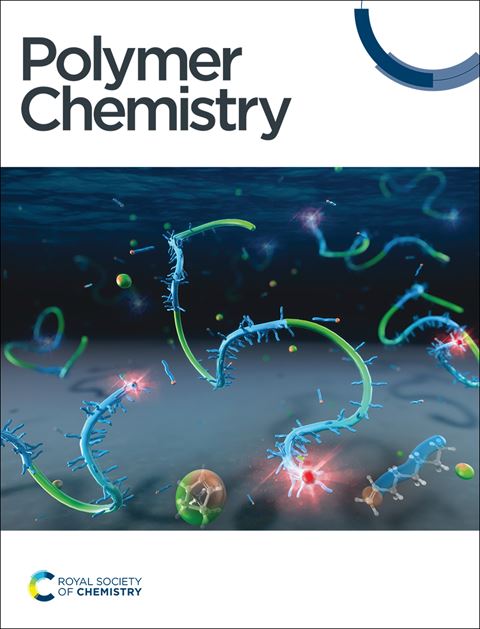l-Phenylalanine monomer coacervation leads to well-controlled nanocrystal topochemical photo-RAFT polymerization†
IF 4.1
2区 化学
Q2 POLYMER SCIENCE
引用次数: 0
Abstract
We describe the self-coacervation and nanocrystal topochemical photo-RAFT polymerization of ionic phenylalanine acrylamide. The charged monomer molecules undergo self-coacervation through nanoclustering, liquid–liquid phase separation, and crystallization within dense droplets in water at pH 7.0 and 25 °C, leading to ultrathin lamellar nanocrystal-containing droplets capable of well-controlled topochemical photo-RAFT polymerization. The reaction induces pathway-dependent self-assembly involving the one-dimensional (non)covalent polymerization of monomer nanoclusters into fibril bundles. Furthermore, monomer molecules within the crystal lattice undergo one-dimensional rearrangements guided by growing polymer segments, leading to the nanocrystal transition into perforated lamellar hollow sieves accompanied by decreased crystallinity, and followed by interfacial topochemical polymerization of monomer nanoclusters site-specifically along the newly activated sites of sieve edges, leading to sieve-centred parallel-growing fibrils. Further reaction leads to densely charged ultrathin fibril lamellae physically crosslinked by fibril network knots. Consequently, the well-controlled topochemical photo-RAFT polymerization up to >98% conversion was achieved shortly in 1 h under ecofriendly ambient aqueous conditions. This work provides a robust platform of the solid-state topochemical polymerization with unprecedentedly high molecular weight controllability.

求助全文
约1分钟内获得全文
求助全文
来源期刊

Polymer Chemistry
POLYMER SCIENCE-
CiteScore
8.60
自引率
8.70%
发文量
535
审稿时长
1.7 months
期刊介绍:
Polymer Chemistry welcomes submissions in all areas of polymer science that have a strong focus on macromolecular chemistry. Manuscripts may cover a broad range of fields, yet no direct application focus is required.
 求助内容:
求助内容: 应助结果提醒方式:
应助结果提醒方式:


